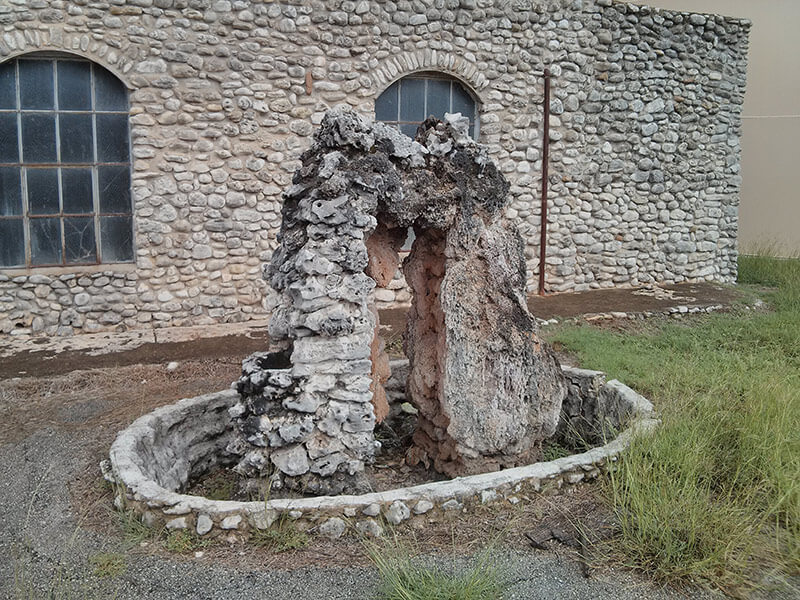
Historic Background
Up to the early twentieth century, New Braunfels relied on the Comal River for its water supply, pumping it out from the river near the Clemens Dam. Pollution and the growth of the textile industry around the turn of the 20th century drove the city to seek a new public water source, and in 1907 the city purchased three springs at the headwaters of the Comal River owned by Fritz Klingemann for $2,500. Mr. Klingemann used the land as a hog farm up to that point. The city installed water pipes and a pump, founding New Braunfels’ new Water Works. During the Great Depression in the 1930s, the city applied for Federal funding to improve the water works and provide work for local citizens. According to an essay written by Ms. Dorothy “Dot” Kerbow (1919-2014), whose father was one of the men who worked at the facility, all of the work was done completely by hand (that’s a lot of digging!). In her essay, Ms. Kerbow noted:
“During all that digging as the years went by many old Indian artifacts were unearthed. Those were the times before such artifacts were protected by law…”


Essay on NB by Aunt Dot
These improvements resulted in the capping of the springs (you can see the Spring Cap today when you visit the Headwaters site, construction of two concrete and stone buildings, a second well, and concrete ponds for fish husbandry. Also on the property at this time was the caretaker’s house, a second residence, and some auxiliary buildings to the north. The city drilled a third well at the end of 1944.
New Braunfels Utilities (NBU) began life as the New Braunfels Electric Company in 1942.
Over the next two decades, the utility took over more of the city’s infrastructure, such as street lights, traffic lights, sewer system, and water system. In the late 1960s, NBU moved their operations and maintenance to the water works. The utility leveled and filled in the old fish ponds, constructed new metal buildings and a water storage tank, and modified existing buildings. On May 11, 1972, intense rain culminated in massive flooding across New Braunfels and forced the Comal River and Blieders Creek over their banks. Flood waters reached a peak height of nine feet at the NBU water works. Although there were no human casualties at the facility, numerous buildings and structures on the property were damaged or destroyed in the flood, including the caretaker’s house and rock walls lining the river and creek.
NBU moved almost all operations off the property in the mid-1990s, leaving most of the buildings vacant; a few are currently still in limited use for storage. As the water pumps and treatment facilities are now mostly automated, no permanent personnel were needed at the facility.




